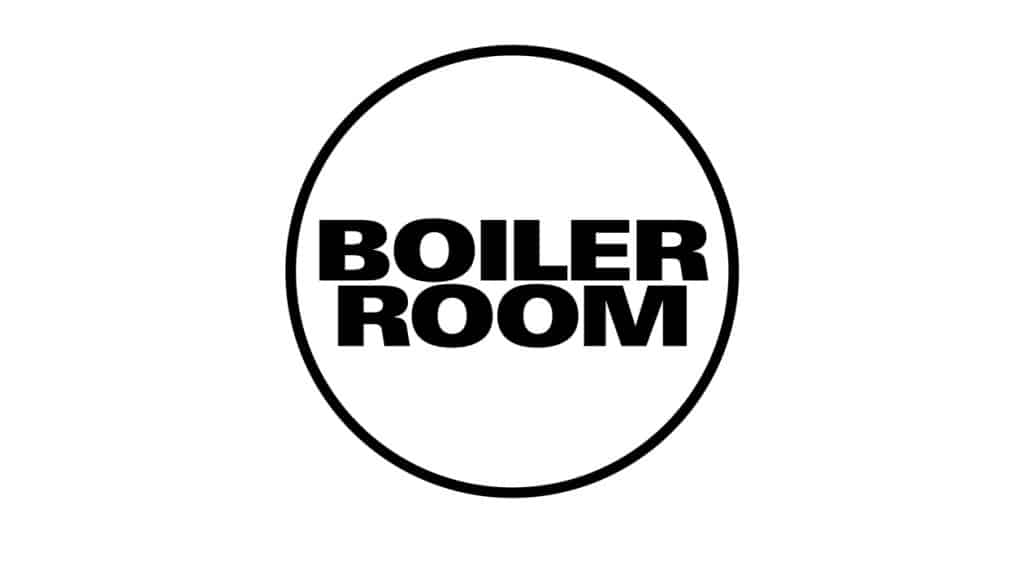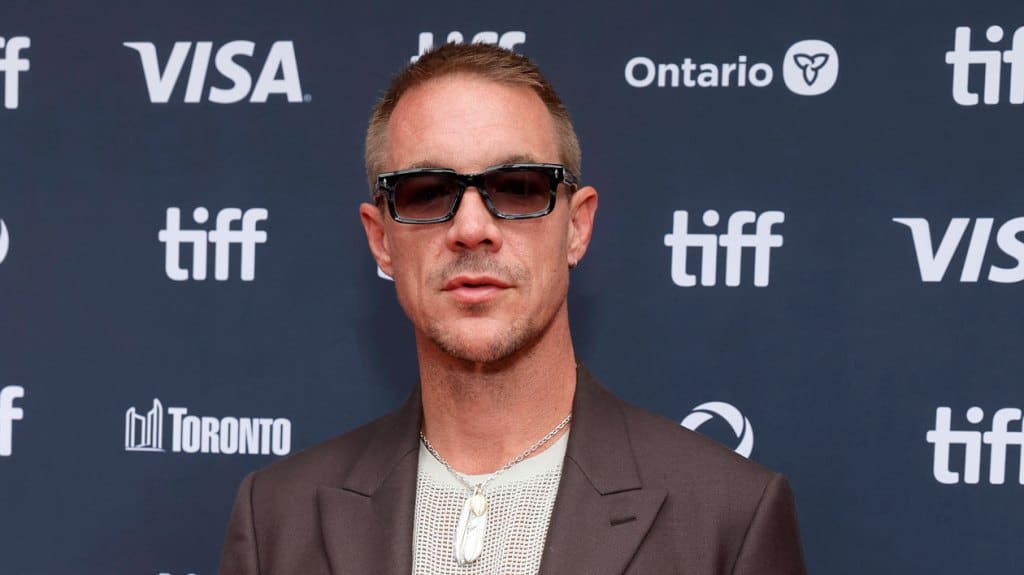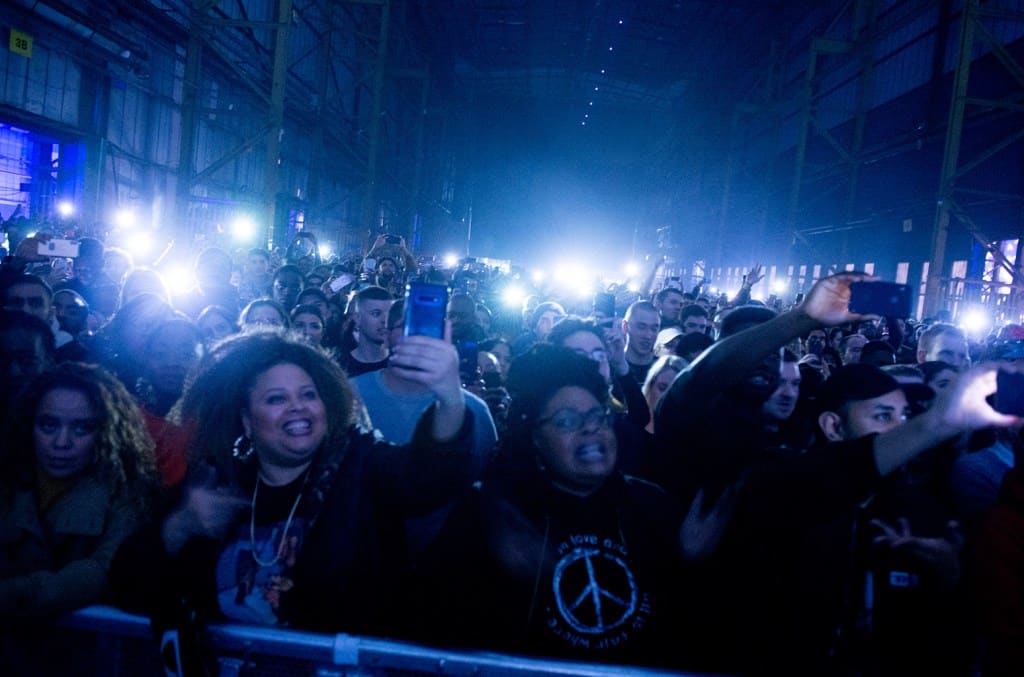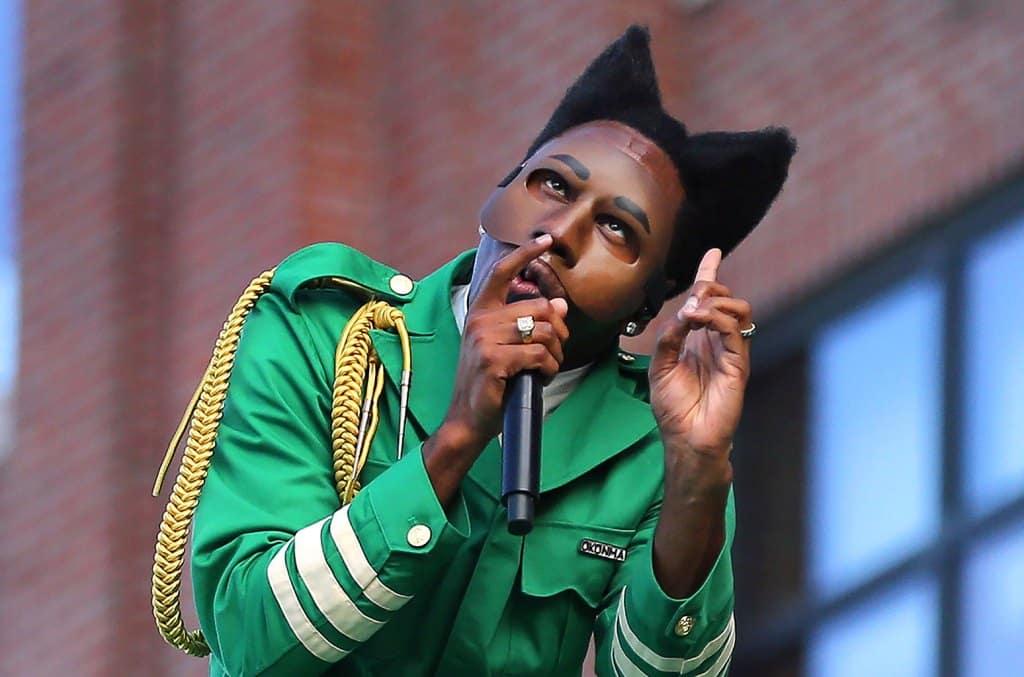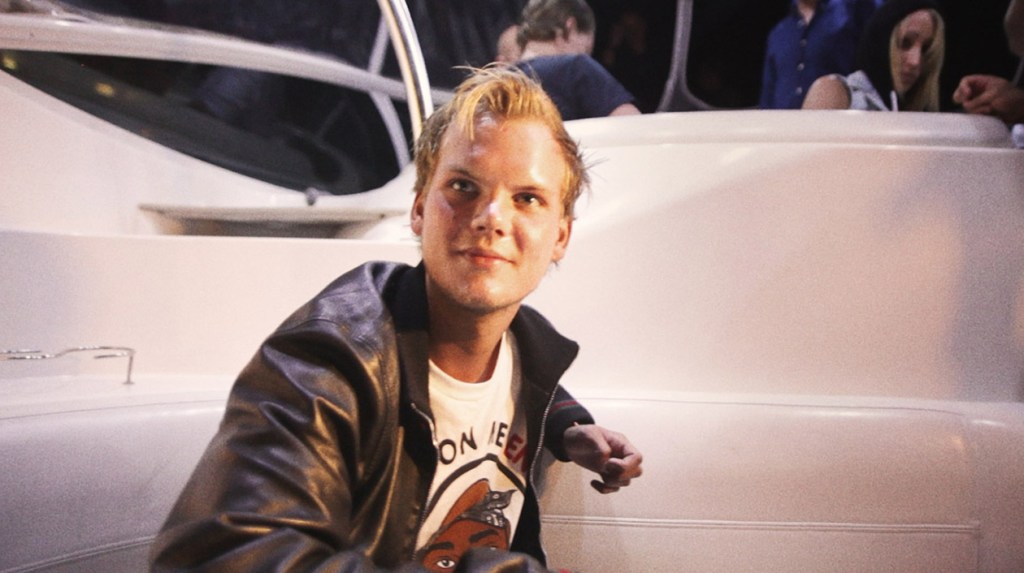Dance
Page: 24
Boiler Room, a longstanding event and streaming series, has been acquired by European festival organizer Superstruct Entertainment. A representative for the company declined to disclose the terms of the deal.
Boiler Room was previously owned by ticketing platform Dice, which acquired it in 2021. Dice will remain Boiler Room’s official ticketing partner.
A statement on the deal notes that Boiler Room’s team will remain responsible for leadership of the business under Superstruct, “and it will retain its identity with active support for theirdevelopment through Superstruct’s global resources and expertise.”
Trending on Billboard
A representative for Superstruct confirms that Boiler Room will continue generating revenue through brand partnerships (Boiler Room has had long-term deals with Pernod Ricard and Ballantine’s), along with ticketed events and its apparel brand. While Boiler Room videos regularly rack up millions of streams on YouTube, Boiler Room makes almost nothing from this YouTube content, as it doesn’t own any rights to the music.
“As we turn 15 and enter our next stage of growth, we’re excited to be partnering with Superstruct for this chapter,” Boiler Room founder Blaise Bellville said in a statement. “We feel in good company with their roster of brands, they offer us new opportunities to grow, whilst understanding the importance of staying true to the authenticity that, at its core, is what makes Boiler Room special.”
“We are proud to welcome the talented team at Boiler Room, who have managed to consistently grow the platform over the last fifteen years whilst maintaining a distinct cultural approach,” added Superstruct Entertainment CEO Roderik Schlösser. “This partnership perfectly aligns with Superstruct’s mission to celebrate and amplify cultures through creativity, collaboration, and live entertainment. Boiler Room is in the best position it has ever been and we are excited to support them in their promising future ahead.”
In June, Billboard reported that global investment firms KKR and CVC had agreed to acquire Superstruct Entertainment from Providence Equity Partners. Superstruct — which has a portfolio of more than 80 events including the electronic festivals DGTL, Mysteryland, Parookaville, Brunch Electronik, along with Sziget, one of the largest music festivals in Europe, and the world’s largest heavy metal festival, Germany’s Wacken Open Air — was founded in 2017 by Providence and James Barton, a former Live Nation executive who also founded the Liverpool-based night club Cream. The terms of that deal were not disclosed, though the Financial Times reported that Superstruct sold for around €1.3 billion ($1.39 billion).
Billboard’s Hot Dance/Pop Songs chart (dated Jan. 18) premieres this week led by Tate McRae’s “It’s OK I’m OK” at No. 1.
As previously announced, the 15-position chart ranks the most popular current dance/pop titles, featuring titles with dance-centric vocals, melody and hooks by artists not rooted in the dance/electronic genre, ranked by streaming activity by online music sources tracked by Luminate; radio airplay audience impressions as measured by Mediabase and provided by Luminate; and sales data as compiled by Luminate.
“It’s OK I’m OK” tops the chart thanks to 22.3 million radio airplay audience impressions and 4.7 million official U.S. streams in the Jan. 3-9 tracking week.
Explore
See latest videos, charts and news
See latest videos, charts and news
Charli XCX follows at Nos 2, 3, 4 and 6 with “Apple,” “360,” “Guess” (featuring Billie Eilish) and “Sympathy Is a Knife” (featuring Ariana Grande), respectively, all from her album Brat.
Trending on Billboard
Rounding out the top 10 of the inaugural Hot Dance/Pop Songs chart, The Weeknd and Anitta’s “Sao Paolo” ranks at No. 5, Betsy and Maria Yankovskaya’s viral “Sigma Boy” starts at No. 7, bbno$’s “Two” places at No. 8, Katy Perry’s “I’m Him, He’s Mine” (featuring Doechii) ranks at No. 9 and Kesha’s “Joyride” is No. 10.
Billboard’s revamped Hot Dance/Electronic Songs chart also takes effect this week. The 25-position list ranks the most popular current dance/electronic songs, billed to DJs, producers and long-standing core artists in the dance/electronic genre, with an emphasis on electronic-based production.
Marshmello and Kane Brown’s “Miles On It” rules Hot Dance/Electronic Songs for a 35th week, with 16.7 million radio airplay audience impressions, 7.3 million U.S. streams and 1,000 sold. It’s the fourth longest-leading No. 1 in the chart’s 12-year history, after Marshmello and Bastille’s “Happier” (69 weeks at No. 1 in 2018-20); David Guetta and Bebe Rexha’s “I’m Good (Blue)” (55 weeks, 2022-23); and Elton John and Dua Lipa’s “Cold Heart (Pnau Remix)” (36 weeks, 2021-22).
Elsewhere in the top five: Guetta, Alphaville and Ava Max’s “Forever Young” (No. 2), Chrystal’s “The Days” (No. 3), Adam Port and Stryv’s “Move” (featuring Malachiii; No. 4) and Snow Strippers’ “Under Your Spell” (No. 5).
Meanwhile, on the Top Dance Albums chart (whose name switches from Top Dance/Electronic Albums as of this week), Charli XCX’s Brat spends a 31st week at No. 1 – encompassing its entire run on the ranking – with 20,000 equivalent album units.
A woman accusing Diplo of sharing “revenge porn” has dropped her lawsuit against the DJ, just weeks after a federal judge ruled she would need to reveal her identity if she wanted to proceed with the case.
In a court filing on Monday (Jan. 13), attorneys for the unnamed “Jane Doe” asked the judge to dismiss the lawsuit — a case that claims the DJ (Thomas Wesley Pentz) filmed sexual encounters without the woman’s knowledge and shared them on Snapchat.
The motion asked the judge to dismiss the case “without prejudice” — meaning the woman could still refile it at some point in the future. Her attorneys did not immediately return a request for comment on the decision to drop their case or whether they plan to refile it.
The move came two weeks after Judge Mónica Ramírez Almadani ruled that the Doe must use her real name to keep pursuing her accusations against Diplo. The judge acknowleged that the allegations were “sensitive and of a highly personal nature,” but said the accuser had failed to legally show that she needs to remain anonymous.
“Those using the courts must be prepared to accept the public scrutiny that is an inherent part of public trials,” the judge wrote, quoting from another old ruling. “Plaintiff has not sufficiently demonstrated that this case warrants an exception.”
At the time, Doe’s attorneys vowed to appeal that ruling, saying revealing her name “risks permanently linking a survivor to their trauma.” The status of any such appellate effort is unclear after Monday’s voluntary dismissal.
Diplo’s attorneys did not immediately respond to a request for comment on the voluntary dismissal of the case against their client. In previous statements, they have strongly denied the lawsuit’s allegations, calling it an “obvious shakedown attempt.”
In a complaint filed in June, Diplo’s accuser alleged she’d had a consensual sexual relationship with the DJ from 2016 to 2023, and that she occasionally “gave defendant Diplo permission to record them having sex.” But she said she later learned that he had sometimes secretly recorded them and then shared footage on the internet “without plaintiff’s knowledge or consent.”
“Plaintiff brings this action to recover for the emotional and physical injuries she endured because of Diplo’s actions and to make sure no one else is forced to suffer the privacy invasions and physical and mental trauma she felt and continues to feel to this day,” Doe’s attorneys wrote.
The lawsuit accused Diplo of violating the federal Violence Against Women Act, which was amended in 2022 to ban the sharing of “intimate” images without the consent of those depicted in them. The case also cited an earlier revenge porn law enacted by the state of California.
The abrupt dismissal of the Jane Doe case came a week after lawyers for Diplo announced a deal to resolve a messy legal dispute with Shelly Auguste, another former romantic partner of the DJ/producer, as reported by Rolling Stone.
In that case, which had been set to go to trial this month, Diplo accused the woman of stalking, trespassing and releasing revenge porn of him. She had also leveled her own set of legal claims against him, including sexual battery and assault.
The Chemical Brothers’ music has been loved by the cinema and video games since the beginning, when in 1995 “Chemical Beats” ended up in the soundtrack of the PlayStation game Wipeout. The latest such appearance is in the film Sonic the Hedgehog 3, where “Galvanize” sounds perfect in a scene with Jim Carrey dancing among laser beams. Tom Rowlands has already worked on commission for some directors such as Darren Aronofsky for Black Swan and Joe Wright for a theatrical production and for the film Hanna, in the latter case paired with Ed Simons (the other half of the Chemical Brothers).
Explore
Explore
See latest videos, charts and news
See latest videos, charts and news
But this new adventure was really a challenge. With the usual English irony Tom defined “an act of intimidation” the request of director Joe Wright to score the new Sky Original series Mussolini: Son of the Century, based on the novel M. Son of the Century by Antonio Scurati, which was recently released in Italy. The series tells the story of the birth of fascism in Italy and the rise to power of Benito Mussolini. The challenge was won, because the Chemical Brothers-style tracks perfectly amplify the emotional and sometimes tragic scenes.
Trending on Billboard
Working with Joe Wright seems to have become a regular occurrence.
True! Ed and I worked together on his film Hanna and then I composed the background music for Joe’s adaptation of Bertolt Brecht’s famous play Life of Galileo, an experience I really enjoyed. I like working with Joe: I still remember him when he followed us on our first important tours, all three of us were kids… Suddenly one day he sent me M., Antonio Scurati’s book. I was hooked from the first pages, it’s a fantastic book! I studied history at university and I immediately realized that Joe’s gesture of offering me this reading was a real challenge, because M. is not only a long book but above all dense and profound. Plus, I’ve always been attracted by the history of that period.
So was it easier for you to feel involved in the project?
Yes, but I could also say that making me read M. was also a sort of intimidating act. First of all because I have never worked on a text that deals with a specific historical event, then because the rise of fascism and the figure of Mussolini are certainly not easy historical topics to deal with. Composing this soundtrack was a serious task. I was very excited at the idea of taking on a challenge so different from my previous ones, and for a project that started from such a powerful book.
The compositions you created for the series are very precise in commenting on the scenes in which they are inserted. Did you start working on the sound even before shooting?
That’s right: Joe Wright and I started talking about ideas and musical themes with just the script in hand. It was a long process of ideas, plus I was interacting with a person who is also a true friend in addition to being a great talent. I tried to give shape to his ideas, because this series is the fruit of his vision.
The soundtrack has very rhythmic sound comments – Chemical Brothers style – and not many melodies.
There are melodies! But they are a bit convoluted, they are never obvious. The main theme is all based on a precise and constant rhythm.
The theme is close to the sound of fascist marches but also takes up the ideas of futurism.
Of course, Joe and I discussed the difference and the relationship between noise and music, which was a theme dear to the futurists. I certainly would never have associated a “floral” sound movement with the advent of fascism!
You stated that part of the soundtrack was made by making old acoustic instruments interact with modern electronics.
Right. I developed a system in my studio where I can have total control of all the information I receive by making my technology interact with traditional instruments such as strings and piano. What we were describing musically was a certain past that really happened. When I met Antonio Scurati he was absolutely in agreement with this creative process, as well as the fact that for (this series) all modern electronics were used to tell not an imaginary world but historical facts, the songs often comment on words taken from real speeches by Mussolini.
The tracks are sometimes very short sound comments. Was it difficult to work on them?
Yes, that was also a real challenge. But that’s why I like working on soundtracks: it’s a very different process. I’m also intrigued by being able to comment on the change of emotions during a scene: you can easily go from a sense of calm to one of terror in a few moments, whereas in a song you often try to create only one type of emotion or feeling.
The impression is that in the second part of the series the music becomes increasingly dramatic, as the historical events do.
I tried to musically describe a very complex historical period where a leader conquers the people – part of the population also found Mussolini a funny man – and then comes to total control of the Italian state after the killing of the MP Giacomo Matteotti. I also tried to convey the director’s and writer’s vision: I hope I did it coherently with that.
What do you think of the Oasis reunion?
I’ll be honest: it’s crazy! My kids and their friends are really desperate to get a ticket because that’s a generation that has never seen the Gallagher brothers on stage together. I’ve known Liam and Noel for years, I’ve been to their concerts many times and it’s always been great to be there, but this time the level of hysteria reached to get a ticket here in Great Britain is truly incredible. Speaking of people from Manchester, my kids would love to see The Smiths reunite too!
Which Oasis albums do you like the most?
Whatever age you are, even just 17, Definitely Maybe is still an incredible album: listening to it is as if the songs were speaking directly to you. I’m sure that this effect is triggered also in the new generations. But the second album is not bad either. They are their two masterpieces.
Will we hear new Chemical Brothers music anytime soon?
It’s too early. Ed and I have to take our time, as always. When we release music, we want to make sure it’s music we really love! We’ve never limited ourselves to putting out productions just for the sake of it. And that’s still true today.
David Guetta, Alphaville and Ava Max’s update of Alphaville’s timeless anthem “Forever Young” ascends to No. 1 on Billboard’s Dance/Mix Show Airplay chart (dated Jan. 18).
Guetta achieves his 17th leader on the list, lifting him past Calvin Harris for the most No. 1s since the chart began in August 2003. Guetta tied Harris at 16 apiece when “Never Going Home Again,” with Alesso and featuring Madison Love, led in November. Harris scored his 16th No. 1 with “Free,” with Ellie Goulding, in October.
Next up, Rihanna boasts 12 Dance/Mix Show Airplay No. 1s and The Chainsmokers, 10.
Trending on Billboard
(The Dance/Mix Show Airplay chart measures radio airplay on a select group of full-time dance stations, along with plays during mix shows on around 60 top 40-formatted reporters. Airplay is provided to Billboard by Luminate, with stations monitored by Mediabase.)
Max earns her second No. 1 on the survey, after “The Motto,” with Tiësto, reigned in February 2022.
Alphaville, meanwhile, leads a third Billboard list in a chart-topping history that now stretches more than 40 years. The new version of “Forever Young” crowned the TikTok Billboard Top 50 for a week in October. The German group first topped a Billboard chart when its debut hit, “Big in Japan,” led Dance Club Songs for two weeks in December 1984.
The original “Forever Young” solely by Alphaville hit No. 32 on Dance Club Songs in 1985. Following four weeks on the Billboard Hot 100 in 1985 (between Nos. 93 and 100), it hit No. 65 on the chart in December 1988, sparked in part by renewed radio airplay.
Among other reworkings of the song, Jay-Z and Mr. Hudson’s “Young Forever,” with the latter singing the original’s enduring chorus, hit No. 10 on the Hot 100 in May 2010.
The new “Forever Young,” on Budde Alphaville/What a DJ/Warner Records, concurrently reaches the top 10 on Adult Pop Airplay, jumping 13-10 with Greatest Gainer honors. Guetta and Max each add their second top 10 on the ranking, while the track marks Alphaville’s first overall entry.
All charts dated Jan. 18 will update Tuesday, Jan. 14, on Billboard.com.
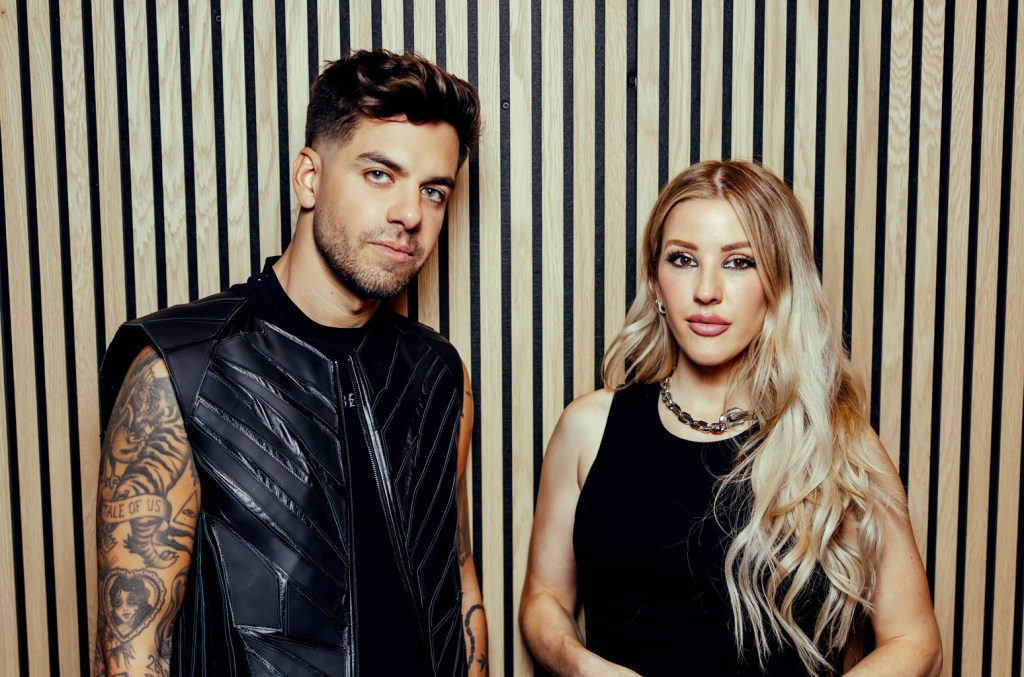
This week in dance music: We’re easing back into the year amid the devastating wildfires in Los Angeles, taking a bit of comfort in music. These are the best new dance tracks of the week.
Explore
See latest videos, charts and news
See latest videos, charts and news
Anyma & Ellie Goulding, “Hypnotized”
Anyma clocked one of the splashiest new music rollouts in recent memory, with the Italian American producer debuting his latest track “Hypnotized” live during his Sphere residency on Dec. 29. Ellie Goulding captivated in the corresponding visuals, which also serve as the song’s music video, and appeared live at the Las Vegas venue to perform the song, an urgent dance-pop earworm with a chassis made from techno, which has long been Anyma’s core genre both in his solo work and with his output as one half of Tale of Us. Out via Interscope, the track, a press release states “marks the beginning of a new chapter for Anyma through numerous mediums and an array of special guests.” Anyma’s final shows at Sphere happen this weekend, Jan. 10-11.
Tokimonsta, “Feel It”
Trending on Billboard
After postponing the release date of her seventh studio album last fall, Tokimonsta has announced the project, Eternal Reverie, is now coming March 7 on her Young Art label. The news comes in tandem with the project’s latest single “Feel It,” a vibey collab with Los Angeles-based hip-hop trio grouptherapy which emanates the same deeply cool mood as the album’s previously released tracks.
Nora En Pure, “Protected”
Nora En Pure releases the sonic equivalent of a hug with her latest, “Protected.” The Swiss/South African producer has always had a special gift with making emotionally resonant music, with “Protected” offering a sense of both uplift, comfort and safety. The track is out on Enormous Tunes, and Nora En Pure is on tour in the U.S. now through the end of the month.
Damian Lazarus feat. Jem Cooke, “Searchin’”
Before his annual Day Zero festival starts in Tulum this weekend, Damian Lazarus releases his fifth studio album, Magickal. The eight-song project features collaborations with Totally Enormous Extinct Dinosaurs, Fink and more, with ever-reliable British vocalist Jem Cooke guesting on the slinky “Searchin’.” Lazarus will play Day Zero on Jan. 11 alongside producers including Carlita, Major League DJz, DJ Harvey, Fatboy Slim, Dubfire and more.
deadmau5, “Jupiter”
Originally written in 2017, deadmau5’s “Jupiter” contains, as its name implies, a deep space quality, with the corresponding video featuring the song’s namesake planet (the biggest in the solar system) itself. The Canadian producer has quickly responded to the Los Angeles fires, today releasing a limited edition T-shirt in collaboration with Blackcraft Cult, with 100% of the proceeds going to the Los Angeles Fire Department Foundation.
Grimes is reflecting on the state of the world amid the ongoing wildfire crisis in Los Angeles, from which she and nearly 200,000 other Californians have been forced to evacuate this week.
In a tweet posted Thursday (Jan. 9), the musician wrote that she thinks “the vibe is rather Biblical out here,” positing that “we might be outta time w regards to twiddling our thumbs whilst every level of our culture, environment, government, institutions, mental health, etc have obviously crumbled.”
“Luckily unlike all previous dark ages, we have an immunity against lost information,” she continued. “Printing press, hard drives etc. but what are we going to do about it?”
Grimes’ post comes about two days after wind-fueled flames first broke out in the Pacific Palisades area Tuesday (Jan. 7), quickly spreading across L.A. County and claiming an estimated 10,000 homes and structures. More fires have since torn through the Hollywood Hills, Pasadena, Altadena, Sylmar and Calabasas, with at least 10 people reported dead in the destruction, according to CNN.
As of Thursday, about 180,000 residents had been placed under evacuation orders or warnings — including the “Oblivion” singer, who tweeted the day prior, “Just had to evacuate, tried to go to a friends place / it got an evacuation warning on the way there – now aimlessly driving out of the city.”
“is the whole city gna be gone?” she’d added. “This is a serious tragedy for LA – I feel profoundly sad for everybody.”
In the replies to her tweets, Grimes sympathized with the “billions of climate [refugees] from less wealthy areas of the world” who might also be affected by similar environmental disasters outside of L.A. and said that the wildfires feel “like a weird invisible hand poking the dominoes.” And when one commenter tried to pivot the climate conversation to her past relationship with Tesla boss Elon Musk — with whom she shares three young children — the Elf Tech founder shut it down.
“He’s pretty vocal about climate change and is primarily known for, in part, revolutionizing electric vehicles,” she replied to a person who’d called the billionaire “one of the most evil climate deniers of all time.”
“I think there’s plenty to be angry about but when you stray from fact and reason, your critique loses power,” Grimes continued of her ex partner, who has reportedly taken up near-permanent residence in Florida near soon-to-be-inaugurated President Donald Trump, a vocal climate change critic.
“The biggest challenge right now is not falling into creating and consuming dopamine rage bait on social media and focussing on thoughtful, rational, truth based discourse so that we can properly diagnose and solve our problems,” Grimes wrote.
The “Miss Anthropocene” musician and the Tesla CEO had an on-again, off-again relationship between 2018 and 2022. In 2020, they welcomed their first child — a son named X Æ A-Xii — and later became parents to daughter Exa Dark Sideræl (now 3) and son Techno Mechanicus (2). Musk is also Dad to seven children he shares with his first wife, Justine Wilson, and twins Strider and Azure, whom he shares with Neuralink director Shivon Zilis.
In December, Grimes touched on their breakup during an exchange with Azealia Banks on X. “i didn’t ‘get dumped,’” the former wrote of Musk at the time. “I bounced. My amazing baby is asleep in my bed beside me, I’m in love. no regrets. Life is as beautiful as u want it to be.”
Click here for a list of organizations providing assistance for music industry workers during the fire emergency.
See Grimes’ tweets about the L.A. wildfires below.
The vibe is rather Biblical out here. I think we might be outta time w regards to twiddling our thumbs whilst every level of our culture, environment, government, institutions, mental health, etc have obviously crumbled. Luckily unlike all previous dark ages, we have an…— 𝖦𝗋𝗂𝗆𝖾𝗌 ⏳ (@Grimezsz) January 9, 2025
Just had to evacuate, tried to go to a friends place / it got an evacuation warning on the way there – now aimlessly driving out of the city. is the whole city gna be gone? This is a serious tragedy for LA – I feel profoundly sad for everybody 🙏🏻— 𝖦𝗋𝗂𝗆𝖾𝗌 ⏳ (@Grimezsz) January 9, 2025
He’s pretty vocal about climate change and is primarily known for, in part, revolutionizing electric vehicles. I think there’s plenty to be angry about but when you stray from fact and reason, your critique loses power. The biggest challenge right now is not falling into…— 𝖦𝗋𝗂𝗆𝖾𝗌 ⏳ (@Grimezsz) January 9, 2025
Following a recent license review, London dance venue Drumsheds has been allowed to remain open but was ordered to enforce new safety measures at its events.
Located in Tottenham, a northern suburb of the capital, the 15,000-capacity venue was reported as being at risk of losing its license late last year. This followed a number of serious incidents on the premises and a subsequent investigation launched by Enfield Council.
On Oct. 12, 2024, a 27-year-old man died after attending a Drumsheds event, an incident believed to have been drug-related (as per The London Standard). On Dec. 7, a 29-year-old woman also died after a show by Belfast dance duo Bicep at the venue, with police stating the tragedy was also connected to drug usage. An emergency licensing review was called after the latter incident.
Trending on Billboard
In November, meanwhile, a man was stabbed inside Drumsheds, with emergency services called to the scene. No arrests have been made in connection with any of these three incidents. The stabbing was later confirmed by police to be non-fatal.
Following a meeting held by Enfield Council Tuesday (Jan. 7), it has been ruled that Drumsheds has permission to remain open, but will need to operate under specific safety measures going forward. The space — a repurposed IKEA unit — will now boast an increased police presence during events, and any serious incidents on the premises must be reported to emergency services immediately.
Issues with the organization of the venue were highlighted online last month, when a public petition was launched amid claims of “overcrowding” at Drumsheds events following a surplus of social media posts related to “unsafe queues.” This happened at the 15th anniversary celebration for U.K. bass label UKF, which took place on Dec. 13 and was headlined by Pendulum, Nero and Knife Party.
As per Mixmag, however, the review findings from the meeting have stated that the venue will not have to reduce its capacity, nor implement mandatory ID scanning and “bomb detection dogs.” It isn’t yet clear how the new measures will impact upcoming events at Drumsheds. The first scheduled event following the review, billed as Red Bull’s Culture Clash, is set to be held on Mar. 8. The line-up features London DJs Jyoty, Kenny Allstar and Teezee.
This summer’s Bonnaroo Festival will feature headline sets from Luke Combs, Tyler, the Creator, Olivia Rodrigo and Hozier. The June 12-15 mega fest on the ‘Roo Farm in Manchester, TN will also feature sets from John Summit, Dom Dolla, Avril Lavigne, Glass Animals, Vampire Weekend, Justice, Queens of the Stone Age and an “Insanely Fire 1970’s Pool Party” SuperJam curated by Remi Wolf.
Explore
See latest videos, charts and news
See latest videos, charts and news
This year’s edition will also introduce the first-ever ‘Roo Residency, which will find prolific Australian rockers King Gizzard and the Lizard Wizard playing three sets over three days. Also performing on the fest’s 10 stages over four days: Marcus King, Insane Clown Posse, Goose, The Red Clay Strays, Rainbow Kitten Surprise, Megadeth, Wallows, Foster the People, Nelly, GloRilla, Mt. Joy, RL Grime, Beabadoobee, Tyla, MJ Lenderman, Modest Mouse, Raye, Royel Otis, Dispatch, Aly & AJ, Action Bronson, Role Model, Natasha Bedingfield and BossMan Dlow, among many others.
Trending on Billboard
Tickets for the festival will go on sale on Thursday (Jan. 9) beginning at 10 a.m. CT exclusively here, with guaranteed lowest-priced tickets available during the first hour of sales (10-11 a.m. CT). In addition, fans looking for a heightened experience can opt for GA+ tickets, with unlimited access to the Centeroo GA+ lounge, as well as VIP and Platinum options featuring close-in and on-field viewing areas and other perks; click here for more information on VIP and Platinum tickets.
Among the new elements added this year is the “Infinity Stage,” described as a “one-of-a-kind” venue created in partnership with Polygon Live that will feature “spatial sound, synchronized lights and an unprecedented three-dome, open-air design to create the world’s largest, most immersive 360-degree live music experience.”
Check out the full Bonnaroo 2025 lineup below.
The Avicii catalog experienced a significant streaming surge following the release of a new documentary about the late artist. In the wake of the Dec. 31 release of I’m Tim on Netflix, global on-demand streams of the Swedish producer’s catalog increased by 63.9%, according to Luminate. The artist’s catalog had a total of 26.4 million […]

 State Champ Radio
State Champ Radio 